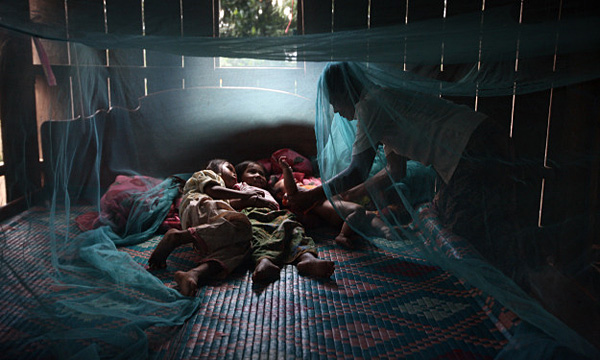
|  |  |  Editorials | Issues Editorials | Issues  
The Save-the-World Clock - Part 7
 Elizabeth Dickinson - Foreign Policy Elizabeth Dickinson - Foreign Policy
go to original
September 23, 2010


| | (Paula Bronstein/Getty Images |  |
GOAL: COMBAT HIV/AIDS, MALARIA, AND OTHER DISEASES

Targets: The MDGs were written at the height of the HIV/AIDS epidemic, and their targets prioritize getting the disease under control by containing infection rates and providing universal access to treatment, the latter of which was meant to be achieved by 2010. The goals also single out malaria, tuberculosis, and other neglected diseases for improvement.

Reality: Thanks to an incredible funding push over the last decade, more people are now on treatment for HIV/AIDS than could have been imagined back in 2000 - some 5.2 million in the developing world. U.S. President George W. Bush's emergency HIV/AIDS program, PEPFAR, poured an unprecedented $2.4 billion into fighting and treating the disease in just one year alone. The United States also helped push for the creation of the Global Fund for HIV/AIDS, Tuberculosis, and Malaria, a reservoir for donor money that coordinates global efforts. The fund is estimated to have saved 4.9 million lives since it was founded in 2002.

Today there are some 33 million people living with HIV, most of them women and most in sub-Saharan Africa, says Bertil Lindblad, head of the UNAIDS New York Office. "That's due to the good fact that we have given more people access to [treatment,]" he explains. The major concern for HIV/AIDS campaigners now is whether funding levels can be kept up in hard financial times and even broadened in focus. "AIDS is not only a medical and health issue," Lindblad explains, "It has to do with services, discrimination, the workplace, you name it."

Malaria, meanwhile, still kills 1 million people every year. There are simple ways to prevent the disease - for example using bed nets to keep out the disease-causing mosquitoes from biting - but implementing those fixes on the ground is often more complicated. Bed nets, for example, only work if families use them. Malaria has also proven extremely complicated to vaccinate and treat; strains of the parasite have developed resistance against several previously effective drug regimens.

|

 |
|  |



